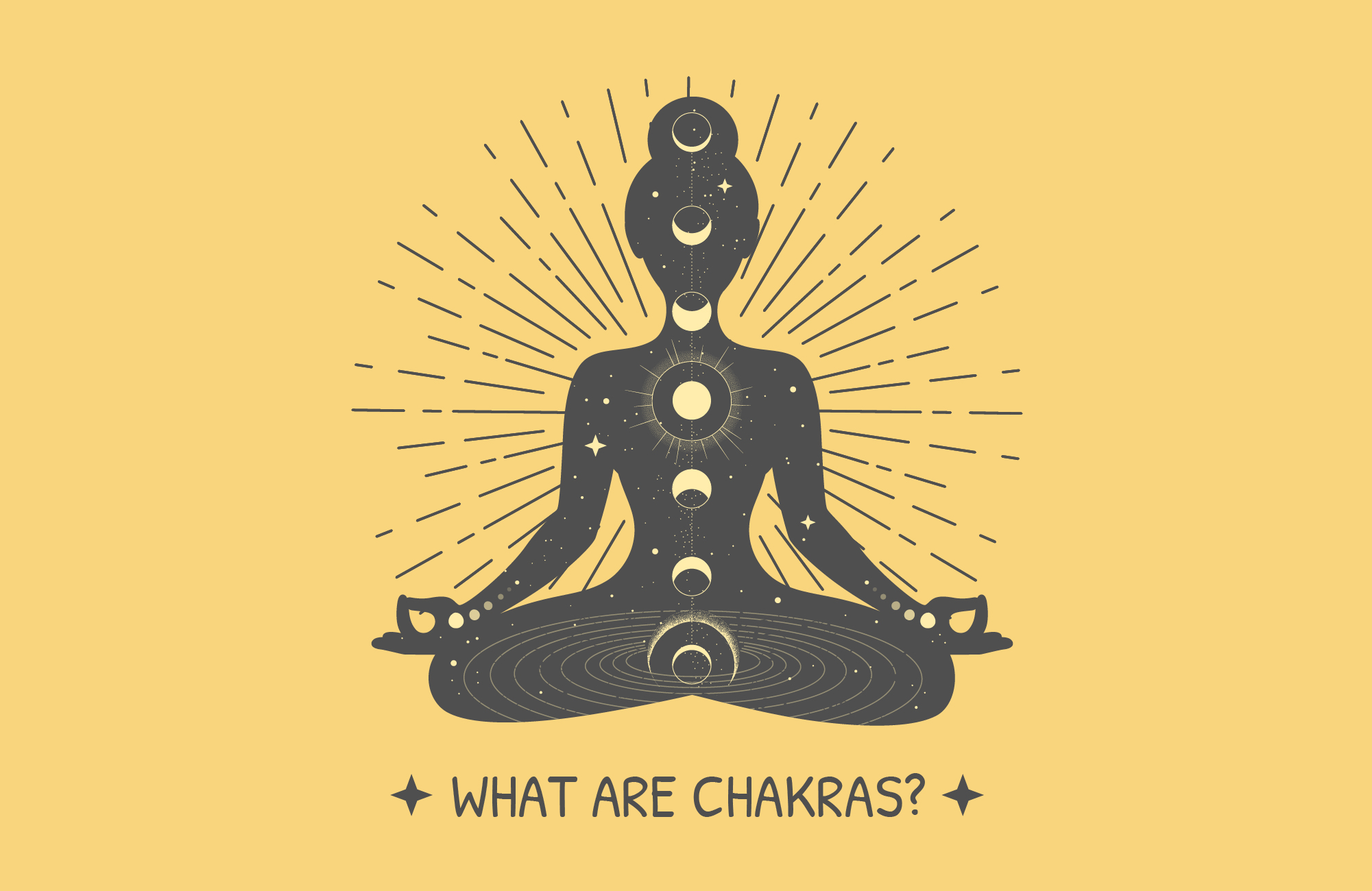What are Chakras?

What are Chakras?
Chakras are energy centers within the human body that are believed to regulate physical, emotional, and spiritual well-being in various spiritual and healing traditions, particularly in Hinduism and yoga. There are seven main chakras, each located along the spine from the base to the crown of the head. Each chakra is associated with specific physical, emotional, and spiritual aspects, as well as certain colors, elements, and sounds.
Balancing the chakras is believed to promote overall health and well-being. Practices like yoga, meditation, and energy healing often focus on aligning and harmonizing these chakras.
Chakras aren’t isolated entities; they function as interconnected gears within the broader human experience, encompassing the mind, body, and spirit. They operate as a unified system, like a family of seven members, each working in harmony with the others.
Frequencies are often used in sound healing practices to help balance and align the chakras.
Names of the Seven Chakras and Attributes
English name (Sanskrit Name) – Color, Frequency
- Crown Chakra (Sahasrara) – Violet or White, 963 Hz
- Third Eye Chakra (Ajna) – Indigo, 852 Hz
- Throat Chakra (Vishuddha) – Blue, 741 Hz
- Heart Chakra (Anahata) – Green, 639 Hz
- Solar Plexus Chakra (Manipura) – Yellow, 528 Hz
- Sacral Chakra (Svadhisthana) – Orange, 417 Hz
- Root Chakra (Muladhara) – Red, 396 Hz
Chakra Nerve Plexus
Each of the seven chakras is intricately connected to a specific nerve plexus in the body, grounding the spiritual concept of chakras in the science of human physiology. These nerve plexuses are clusters of nerves that play a crucial role in regulating various bodily functions, and they correspond closely to the locations of the chakras along the spine. For example, the Heart Chakra (Anahata) is associated with the Cardiac Plexus, which governs heart and lung function, while the Solar Plexus Chakra (Manipura) is linked to the Celiac Plexus, responsible for many functions in the digestive system. This alignment between chakras and nerve plexuses highlights the deep connection between our energetic and physical bodies, suggesting that the balance and health of our energy centers may have direct physiological effects, influencing our overall well-being.
Here’s a breakdown
- Crown Chakra: While not directly linked to a specific nerve plexus, it is often considered to be associated with the Pineal Gland and the cerebral cortex, symbolizing higher consciousness and connection to the divine.
- Third Eye Chakra: Tied to the Carotid Plexus, which is located near the eyes and forehead.
- Throat Chakra: Associated with the Cervical Plexus, located in the throat and neck region.
- Heart Chakra: Connected to the Cardiac Plexus, near the heart and chest area.
- Solar Plexus Chakra (Manipura): Linked to the Celiac (Solar) Plexus, found in the upper abdomen.
- Sacral Chakra: Corresponds to the Sacral Plexus, located in the pelvic area.
- Root Chakra: Associated with the Coccygeal Plexus, located at the base of the spine.
Chakra Spinning
Chakras are believed to spin in specific directions, which can vary depending on different factors, such as the individual’s gender, energy state, or the specific chakra in question. However, a common belief in many energy healing practices is:
- Crown Chakra: Spins clockwise.
- Third Eye Chakra: Spins counterclockwise.
- Throat Chakra: Spins clockwise.
- Heart Chakra: Spins counterclockwise.
- Solar Plexus Chakra: Spins clockwise.
- Sacral Chakra: Spins counterclockwise.
- Root Chakra: Spins clockwise.
For clarity:
- Clockwise spin is associated with receiving energy.
- Counterclockwise spin is associated with releasing or giving energy.
These spinning directions are part of the broader concept of energy flow within the body’s subtle energy system. However, beliefs about chakra spin can vary across different traditions and practices.
the chakras represent a complex and interconnected system that bridges the physical, emotional, and spiritual dimensions of human experience. By understanding and working with these energy centers through practices such as yoga, meditation, and sound healing, individuals can cultivate a balanced and harmonious state of being, fostering overall health and well-being.



